I'm trying to wrap a Carousel component around an array of mapped objects as children of the component. Currently I'm only able to have the mapping create 1 child of mapped objects.
The Carousel needs to be like so:
<Carousel>
<div>1</div>
<div>2</div>
<div>3</div>
</Carousel>
but will not work properly on this one
<Carousel>
<div>
<div>1</div>
<div>2</div>
<div>3</div>
</div>
</Carousel>
Please see the original reproducible code that has my carousel wrapped around 1 Child of mapped items: https://codesandbox.io/s/blissful-elion-993vy Note you will see that the Carousel works fine, but many of the Carousel properties are not working at all because it's wrapped around one child, such as animation and indicators prop.
I've tried doing this:
<Carousel
autoPlay={false}
onClick={handleChangePage}
next={loopNext}
prev={loopPrev}
NextIcon={<ArrowForwardIosRoundedIcon fontSize='large'/>}
PrevIcon={<ArrowBackIosRoundedIcon fontSize='large'/>}
navButtonsProps={{
style: {
backgroundColor: 'transparent',
color:"#447CF0"
}
}}
indicators={true}
swipe={true}
animation="slide"
>
{data[0]?.slice((page - 1) * itemsPerPage, page * itemsPerPage)
.map((data, index) =>
{
return (
<Container key={index} maxWidth="lg" component="main">
<Grid container key={index}>
<Grid item key={index} xs={4} md={4}>
<Card>
<CardHeader
title={<Chip label={data.symbol} />}
subheader={data.adj_close}
/>
<CardContent >
<MiniGraphs
historicalPrice={historicalPrice.filter(i => i.symbol === data.symbol)}
dateRange={date}
/>
</CardContent>
</Card>
</Grid>
</Grid>
</Container>
);
})}
</Carousel>
but the Carousel does not re-produce the expected result. It will only show 1 Child per slide , when I've set the number of 3 children per slide.
I think I have too slice the item array into slices of 3 items, and then map each slice to <Container> --> <Grid container> --> <Grid item/> --> ...
Currently stuck on how to accomplish that.
EDIT: I fixed the sandbox.
EDIT:
The desired output is to have all graphs displayed properly as many children in arrays. As you can see in the picture below, only one child is filling up the Carousel per slide (I think because I need to explicitly map at an array of children?). Notice the indicators (grey circles) below the Carousel? They need to appear, if not then it's still one big child of graphs.
